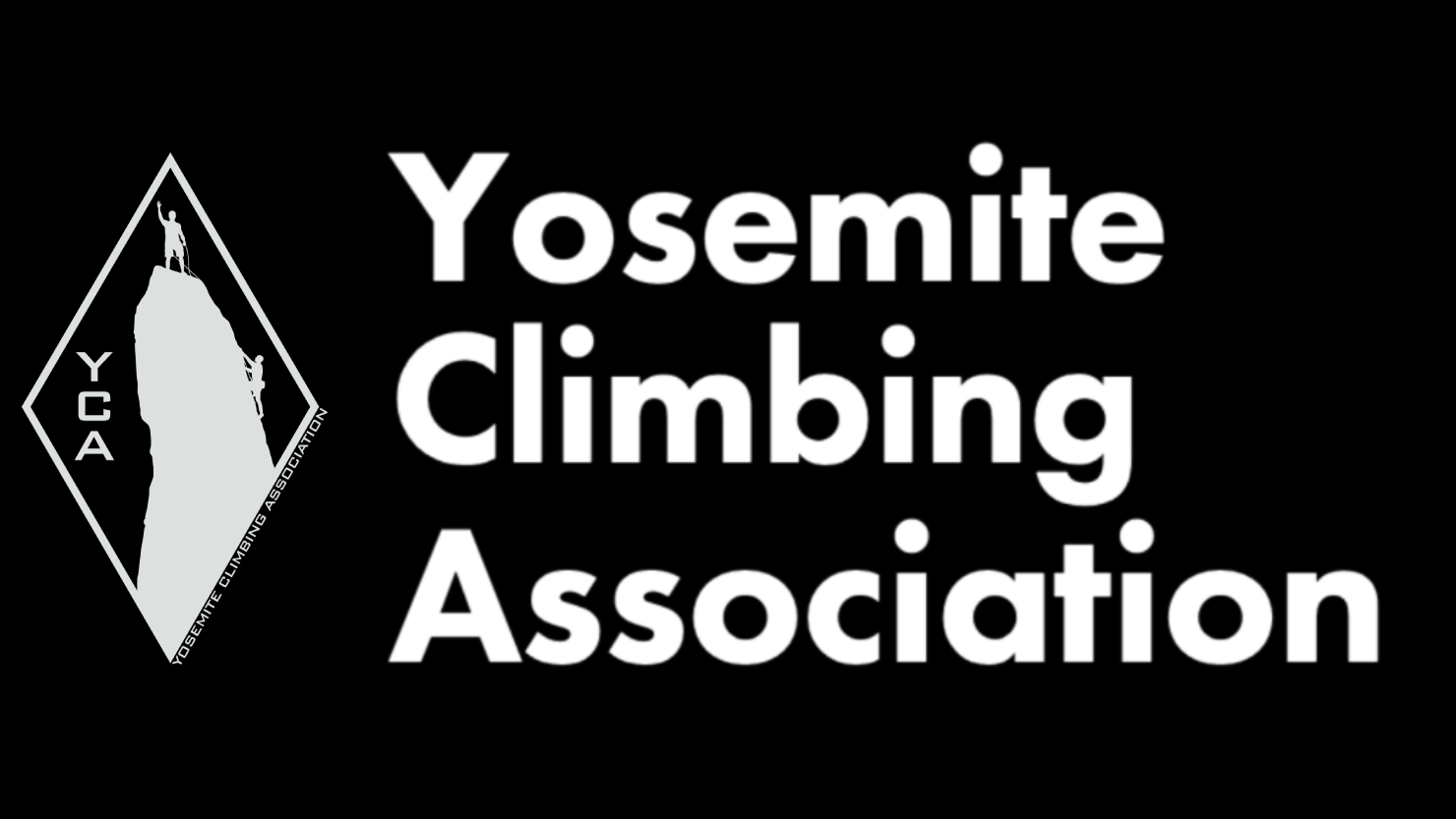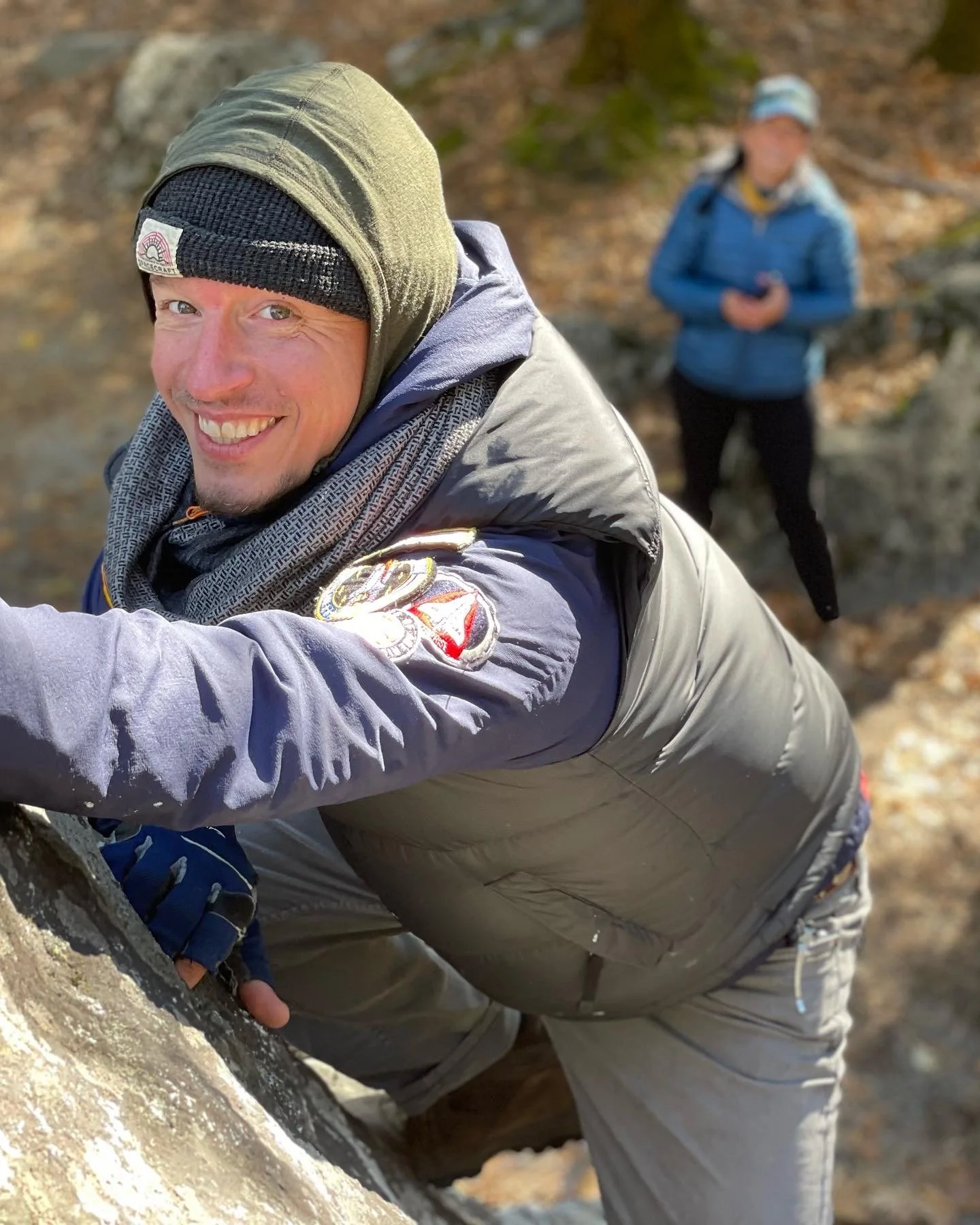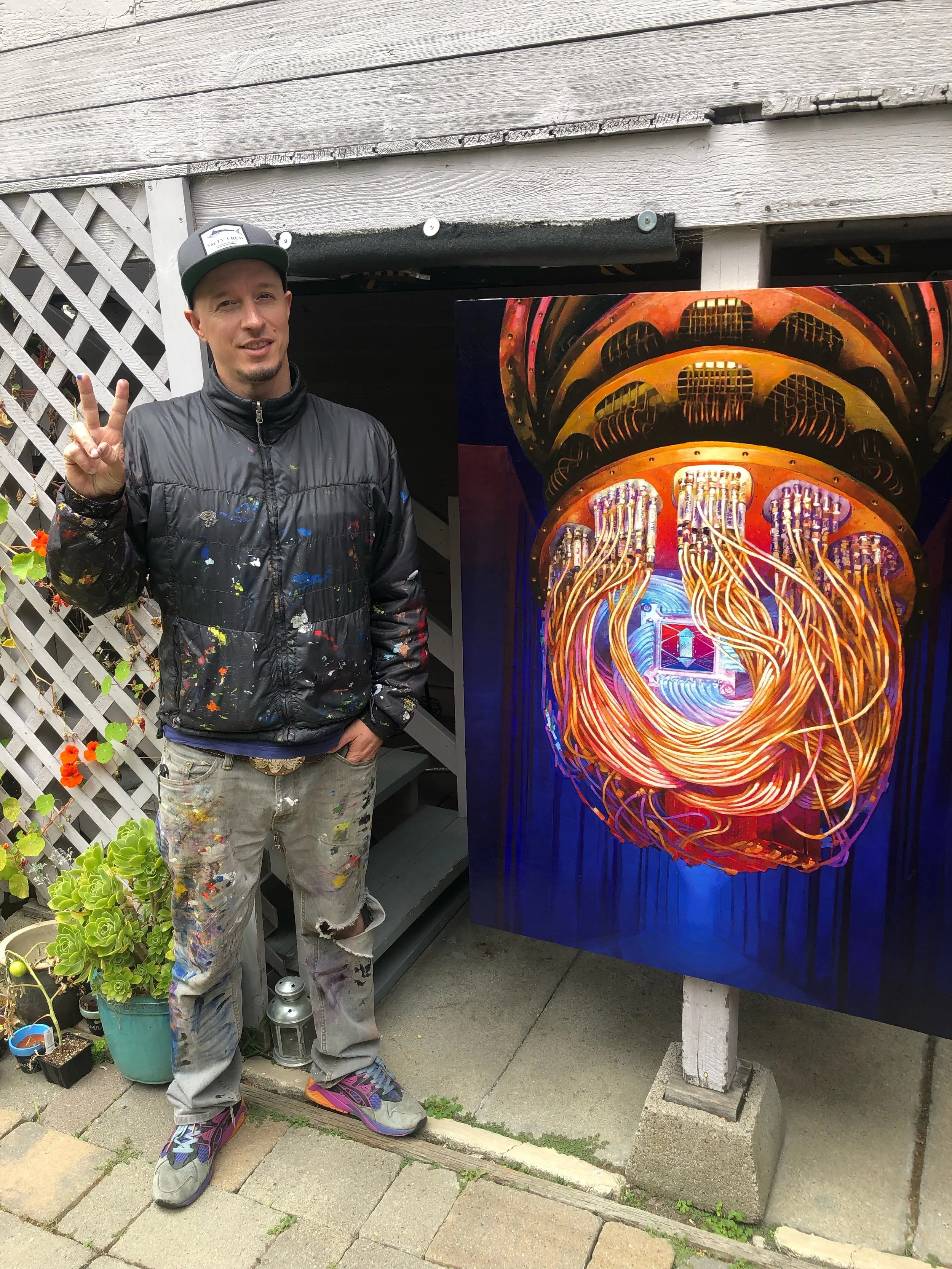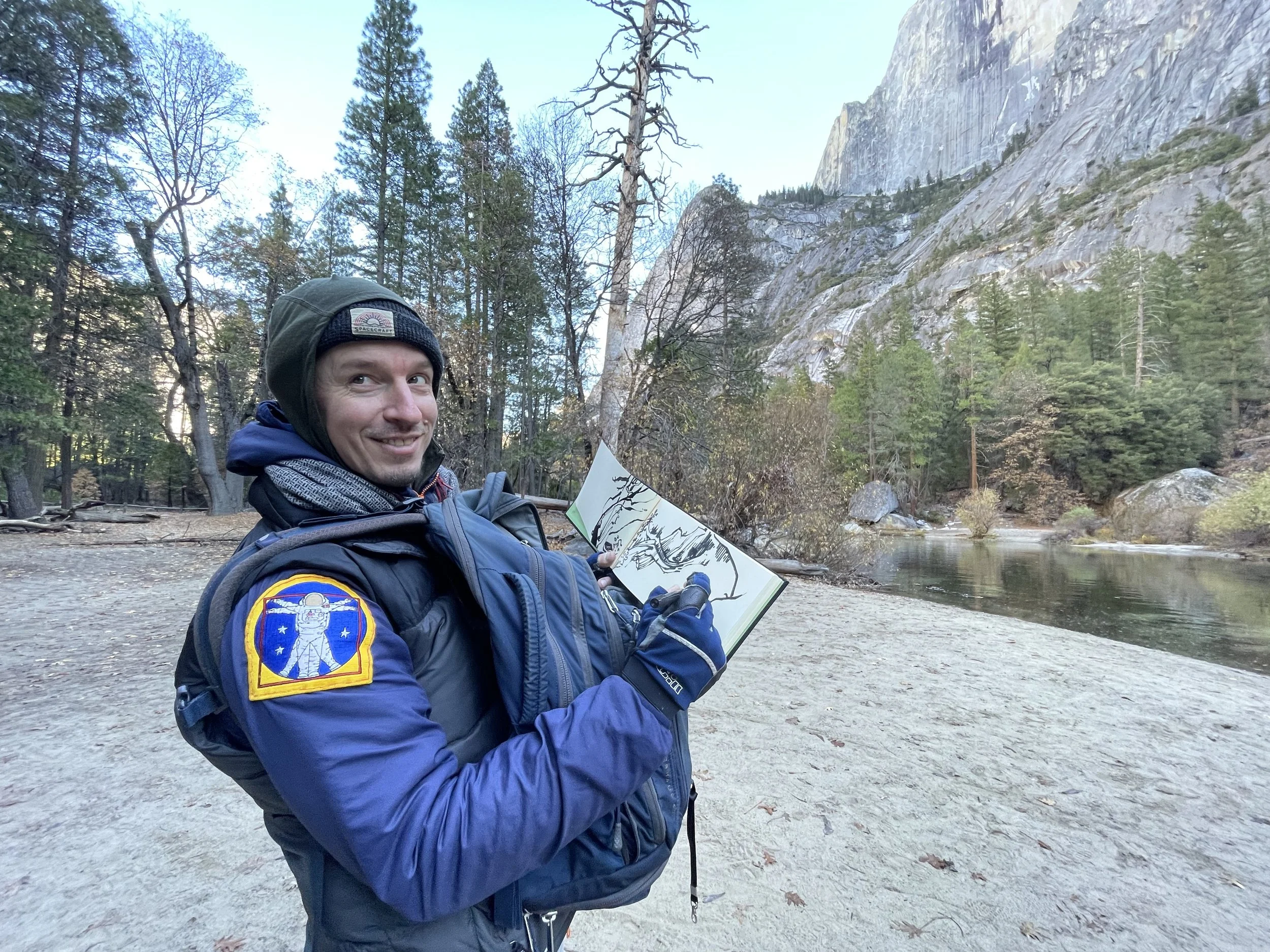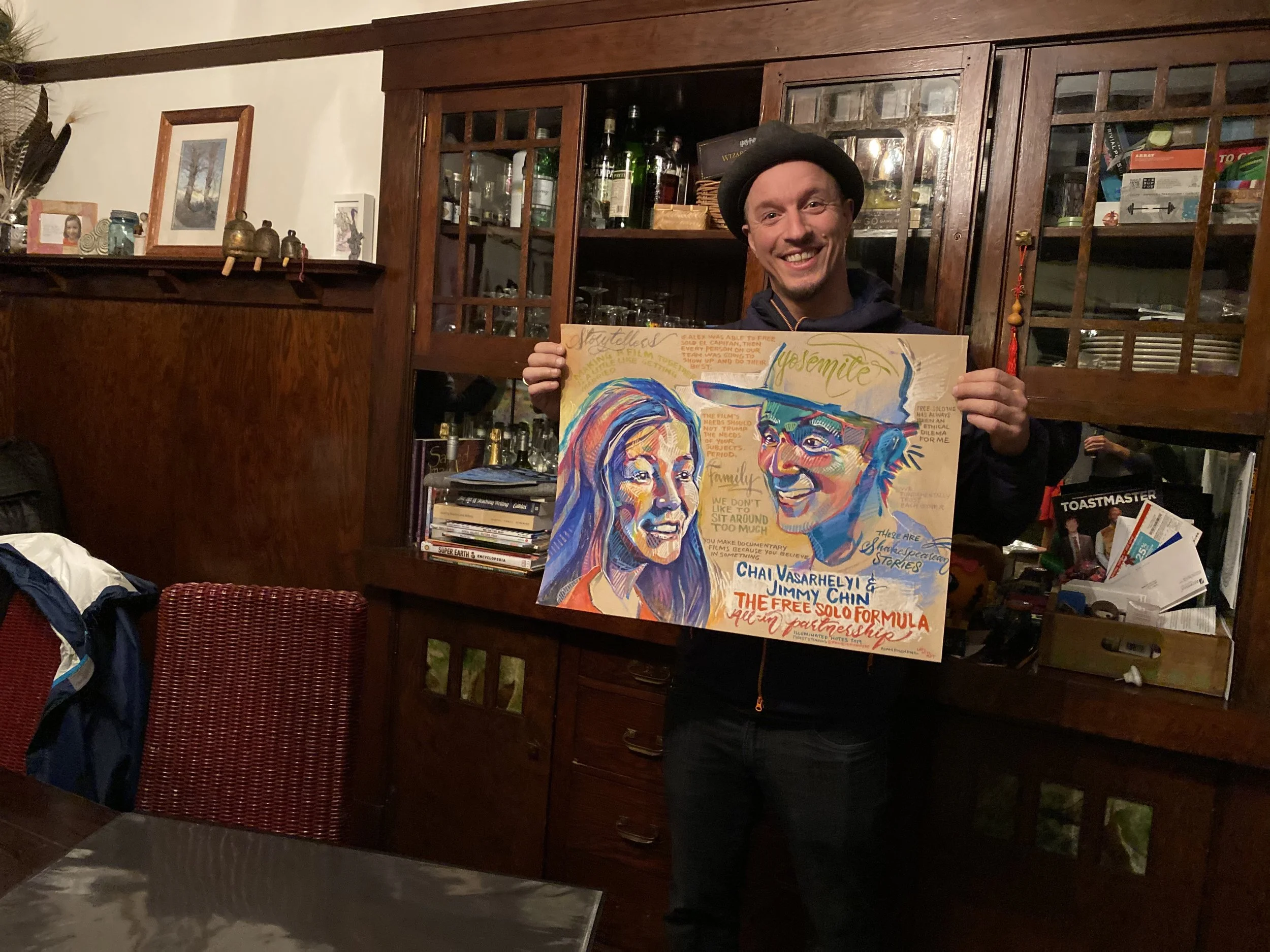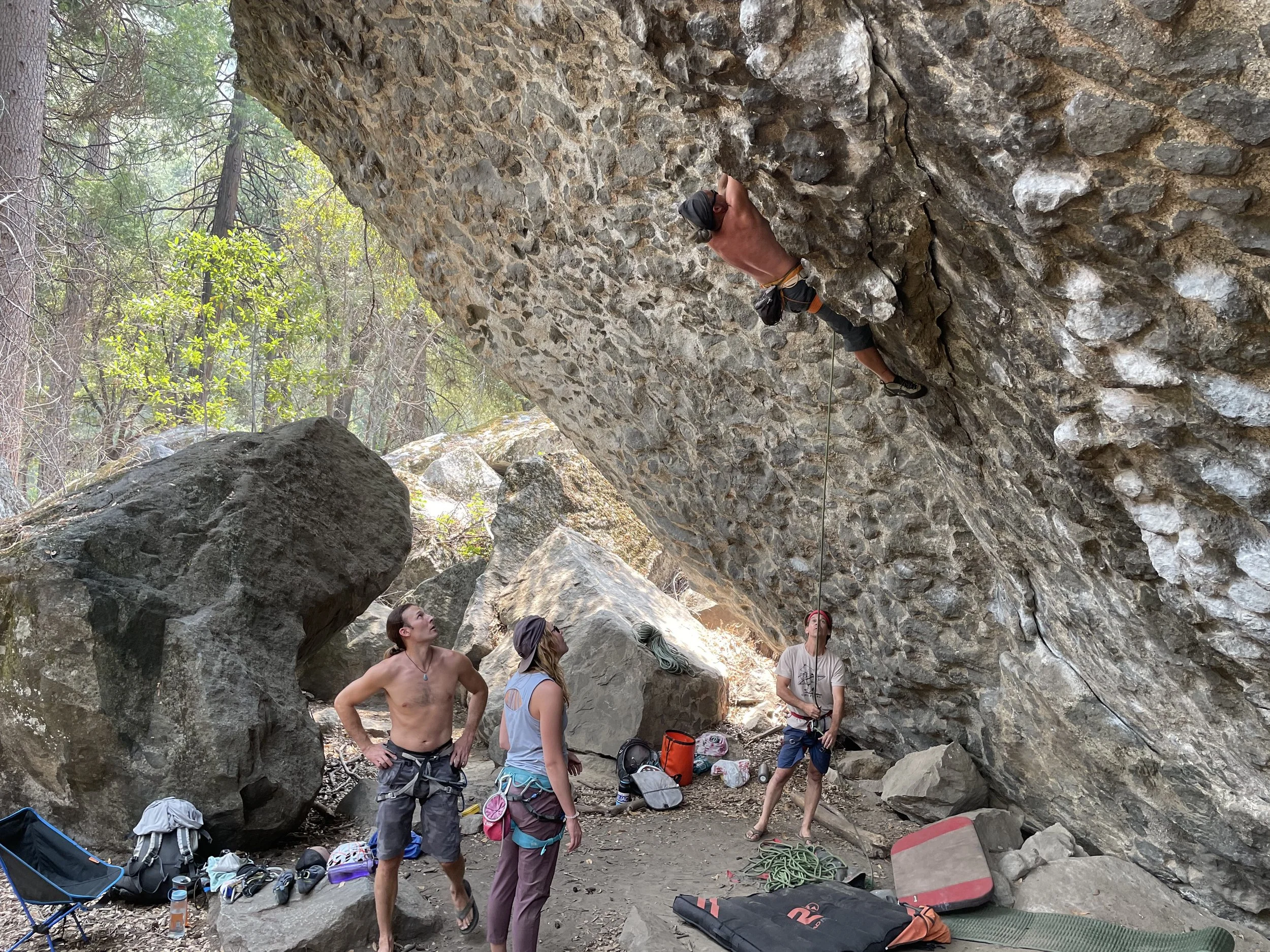EDITION 27 - OCTOBER 2, 2025
Your window into the stories, history, and ongoing work to preserve Yosemite’s climbing legacy.
A Note from the Editor
Today (10.1.25), I received the following email from the Yosemite Mariposa County Tourism Bureau:
We’re pleased to share some good news: from what we know so far, Yosemite National Park will remain open during the government shutdown, with some services operating at a limited level. While the situation continues to evolve, here are the key points you can share with your guests to help them plan a safe and enjoyable visit:
Yosemite National Park remains open during the government shutdown.
Park gates are open with no staff present, and entry fees are not being collected.
Food, lodging, and other services continue to operate through Yosemite Hospitality.
Campgrounds remain open.
Roads, trails, and restrooms are accessible, but most NPS facilities (like visitor centers) will be closed or limited.
Maintenance and emergency services are continuing, though at reduced levels.
Visitors are strongly encouraged to practice Leave No Trace to help protect the park and follow our Nature Rules Guidelines.
Updates from NPS staff will be limited—please advise guests to plan ahead, respect closures, and use local sources for real-time information.
The Mariposa Visitor Center remains open to assist with trip planning.
For the latest updates, guests can visit: Yosemite.com/current-conditions.
Longtime Yosemite local Chris Falkenstein wrote on Facebook on Oct. 1, 2025:
Seems like business as usual. I was surprised by how many people there were. Bathrooms were open, shuttles running, lots of tour buses with plenty of parking. All Aramark services were open and bike rentals were doing a booming business on a nice fall day.
Enough about politics. YCA just completed its biggest event of the year with Yosemite Facelift. As YCA founder Ken Yager writes in his note below, “Volunteers collected 12,799 pounds of trash across the park—4,905 pounds of small fragments and 7,894 pounds of larger items.” And “We had approximately 1,500 volunteers check in over the five days… Evening programs were packed—‘standing room only’ most nights.”
Coming up on Oct. 4 is the next Yosemite gateway Facelift event, taking place in Oakhurst from 8:30 am to 12:30 pm. The event concludes with a raffle at 12:30 pm, followed immediately by an after-party at Idle Hour Winery and Kitchen. Location: Fresno Flats 49777 School Road, Oakhurst, CA, 93644.
This week, we’re featuring former Yosemite resident turned fine artist Forest Stearns. Forest and I go back decades, and in 2019, I featured him in this story in Men’s Journal called Meet the Rock Climbing Artist That Paints Nature Scenes on Spaceships.
In the piece I wrote:
Growing up in the Sierra Nevada foothills, Forest Stearns spent his youth exploring California’s Gold Rush country and climbing rocks. Now he paints nature scenes on spaceships and quantum computers, combining his love of art and the natural world.
Read Ken’s note, and my feature on Forest below.
Chris Van Leuven
Editor, Yosemite Climbing Association News Brief
YosemiteClimbing.org
Ken Yager’s Log | Sept. 30, 2025
To everyone who hauled bags, sorted compost, staffed a table, told a friend, or brought a kid to pick up micro-trash in the Valley: thank you. To the sponsors who showed up with real, tangible help: thank you. To the Park Service and every partner who said “yes” and then did the work: thank you.
I’m exhausted…in the best way. We just wrapped the 22nd year of Yosemite Facelift, and I’m still unloading trailers, returning gear, and jumping straight into tours and a few more shows. That’s how it goes every year: five big days of cleanup and community, followed by a week of putting the whole circus together and back in the box.
This year felt different in a few important ways. First, the numbers tell a story I’ve wanted to see for a long time. Volunteers collected 12,799 pounds of trash across the park—4,905 pounds of small fragments and 7,894 pounds of larger items. That’s the least we’ve ever found during Facelift. It’s a strange milestone to celebrate—less trash—but it points to a culture shift. People are leaving less waste, and the community that loves this place is paying attention all year, not just during Facelift week.
We had approximately 1,500 volunteers check in over the five days. Some came for a single morning, some worked every day, and plenty fit a shift in around a Yosemite vacation. That mix—families, first-timers, lifers who’ve been with us for 20 years—gave the whole event great energy. I also put out a call for a cross-section of the population who want to step up and help lead. I’m serious about succession. Many of us who built this thing are in our sunset years. If Facelift is going to thrive for the next twenty years, we need new organizers, new ideas, and a crew that reflects the community you see at a city climbing gym—broad, diverse, and welcoming.
Another point I’m proud of: we ran a zero-waste event. As of Sunday afternoon, the total measured landfill waste generated by Facelift operations was approximately 30 pounds for all five days, with a diversion rate exceeding 95% (through composting and recycling). Those numbers may tick a hair as final measurements come in, but the headline stands: thousands of people, dozens of booths and programs, and we left almost nothing for the landfill. That required discipline from volunteers and vendors, as well as careful planning from our staff and partners. Thank you.
Evening programs were packed—“standing room only” most nights—and the daytime scene on the mall had real momentum. We added some playful activities that doubled as fundraisers and community builders. Royal Robbins hosted a hangboarding contest and pledged $1 for every second someone could hang. Alternative National Park Service ran a social media campaign that generated an unexpected $8,000 gift. For every post confirming attendance, ANPS provided $10.
Our sponsors showed up in valuable ways. Black Diamond brought their sewing crew and re-slung cams—up to five per person—free. Rivian set up camp and even powered the sewing machines, so we didn’t have to run generators to help with power needs. Rab and others kept people engaged with contests and giveaways. And the National Park Service was a strong partner throughout the week.
The most meaningful moments, though, weren’t about numbers or booths. They were about blessings. The local Indigenous community have been doing blessings at Facelift for many years, but this time was unique. We received three separate blessings, including a surprise visit on the final day. Dr. Julia Parker (Native American from the Pomo tribe) and a cultural specialist—a master basket weaver and elder and long-time friend—took my hands before the ceremony, and later presented me with three necklaces she made herself. The blessings aren’t something you see every day. They aren’t done for agencies or companies. They’re done for this community because the values align—care for the land, humility, and a shared way of moving through the world with respect.
As I write, there’s talk of a government shutdown. We’ve been through them before. In some closures, the park shuts tight. In others, the gates stay open without staffing, and things can go sideways fast.
Facelift itself started as a grassroots community-driven effort back in 2004—a handful of climbers and friends cleaning up after the busy season. It has grown into the largest volunteer cleanup in any national park, but the heart remains the same. Yes, we measure pounds. Yes, we host speakers, films, and contests. But the real work is showing up, picking up, and leaving the park better than we found it. That’s still the point.
Looking forward, I aim to continue broadening the scope of who sees themselves in this work. Our MC this year, Langstyn, brought up his club Negus in Nature from Oakland to table at the event. That matters. I want more of that—more stories from leaders of color, more partnerships that make our crew reflect the diversity of California. We’ve got some profiles in mind to help move that conversation forward.
People always ask for my favorite moment of the week. This time, it’s easy—Sunday’s surprise blessing, Dr. Julia Parker returning for a closing circle, caught me off guard and centered the whole event. I’ve been given many things over the years—support, donations, gear, and time—but being entrusted with that ceremony and those necklaces is something I’ll carry with me.
We’re not done—Oakhurst/Groveland Facelift events are right around the corner, and planning for 2026 is already underway—but for a day or two, I’m going to enjoy the quiet satisfaction of knowing that thousands of small acts added up to something big. Less trash than ever. Nearly zero waste. Full rooms. Full hearts.
See you next year. Bring a friend. Bring two. Yosemite will thank you.
Ken Yager
Founder and President, YCA
Stearns scrambling in Yosemite. Photo: Chris Van Leuven
Forest Stearns: Drawing Nature into the Heart of Innovation
Walking through the Yosemite Climbing Museum in Mariposa, you see the pitons of John Salathé, Jerry Gallwas’s homemade gear from the 1957 Half Dome ascent, and relics from the free-climbing revolution of the 1970s. On the wall hangs a picture of Mark Wellman, who in 1991 became the first paraplegic climber to ascend Half Dome, partnered by Mike Corbett. Their earlier 1989 ascent of El Capitan had already earned them White House honors with President George H. W. Bush.
In 2001, during their commemorative climb of Half Dome, Stearns, not yet a Principal Artist, was working as a horseback guide for the concession stables. “I knew how to ride, I knew how to climb, and I had SAR/EMT training—it was fun to support as a background player with a variety of skills,” he says. He strapped Wellman into stirrups, led horses carrying gear into the high country behind Half Dome. At the stables, the gossip was that the climb was going smoothly, but he later answered the urgent radio call when Corbett was injured in a big whipper: “Can you drop everything you’re doing and go up there and get the climbers and their gear?” Stearns rode back to bring them safely down the mountain from the approach.
That same year, my big wall partner Mike Dewey (who is also an artist) and I met Forest, a veteran employee of Yosemite Concessions. Over the next 25 years, we stayed in touch through hikes, bike rides, bouldering, and what we came to call “super picnics”—gatherings of friends in inspiring outdoor spaces, sharing food and creative energy. Yosemite has been a solid hub, and it reflected who Forest was then as he is now; rooted in nature, committed to community, and always drawing in his sketchbook, which lives like a pistol in the small of his back.
From Sonora to Space: an epic adventure into a non-traditional art career
Forest’s education aligned with his empirical training. He attended Columbia Junior College, where academics were often sidelined for more stereotypically hippie adventures. Quickly realizing that he was up against the glass ceiling of his small-town ecosystem, he earned a BA in Fine Art at HSU (now officially renamed Cal Poly Humboldt), an MFA in Illustration at AAU (Academy of Art) in San Francisco, and, most recently, studied design thinking at Stanford. But even more important than degrees was his practice of remixing empirical education; his habit of mixing social groups, including climbers, street artists, scientists, entrepreneurs, and illustrators, into a dynamic conversation that always circled back to drawing everywhere.
During his studies at Humboldt, he decided to become a professional artist by formally founding his studio, DRAWEVERYWHERE. Adjacent to this, he and a dynamic crew co-founded Empire Squared, a nonprofit collective that transformed public spaces into collaborative canvases. Among his collaborators was Mike Dewey, a Harvard computer scientist and polymathic artist who later introduced Stearns to DeviantArt with his HTML-based drawing tool, Muro. “Mike represented both worlds, climbing and science; he opened the door into the digital frontier for me,” Forest recalls. “He showed me that art didn’t just belong on canvas or walls—it could live in code.”
At DeviantArt in Hollywood, Stearns became Art Director of DA Brands, leading a community to beta test Dewey’s Muro drawing tool, guiding real-world brand experience, illustrating apparel, and producing live art at events such as Art Basel Miami and SXSW in Austin.
At Planet Labs in San Francisco, Forest embedded early on with leadership and engineers as Principal Artist, founding their Artist-in-Residence program. Over four and a half years, he hosted 15 artists, laser-etched drawings onto more than 350 satellites—the first art show in Earth’s orbit. Stearns’ first major production as Principal Artist was the “Great Migration,” a series of three 48x60” canvases painted in graphic black and white, featuring intertwined migratory animals. Stearns innovated a way to exhibit this art in space by scaling the paintings directly into the satellite's side panels. The illustrated animals in these artworks looked back down at Earth from orbit, serving as a reminder to humans to be responsible and respectful of this planet as we develop innovative technologies. The artistic collaboration spanned surface design on a range of hardware to the built environment of international offices. With artworks exhibited on rocket fairings, radomes, and ExhibitSats, they were showcased at the Smithsonian, the United Nations, Chabot, and the Guggenheim.
At the California State Library, he crafted California Remix, a 100-foot mural across 29 panels installed in Gillis Hall alongside Maynard Dixon’s historic mural, Pageant of Tradition. The Library called it “a living narrative for California’s identity.”
Through the Illuminated Notes project, Forest brings his art back to the human scale. At TEDx and enterprise gatherings, he has sketched portraits of his heroes and mapped the content of their talks in real-time — capturing not just epic ideas but the individuals who share them. One standout piece was “The Free Solo Formula,” a portrait of filmmakers Jimmy Chin and Chai Vasarhelyi. Stearns’ drawing honored not only the feat of climbing but the vision and artistry of the producers required to tell that story.
At Google Quantum AI, his portraits of engineers and hardware devices remind the team that behind the machines are the creative humans who facilitate these epic discoveries.
Bringing Yosemite to Quantum Computing with a creative system
In 2018, Google Quantum AI poached Stearns from his position in aerospace to join them in the science of quantum computing.
Dr. Erik Lucero, Research Scientist, Quantum Campus Creative Director, and fine photographer, brought Stearns into the endeavor as Principal Artist early on so the visual language would be cohesive throughout the development of the campus and, in a more unique ask, to figure out a way to put art on the quantum computers. In a move fitting his upbringing, their first collaboration toward this task was a monumental 44×110” painting of Yosemite. This large painting offers a panoramic view of both Yosemite Valley and the high country. “Our love of Nature is what started this whole epic collaboration,” Forest says. Together, they co-founded the Artist-in-Residence program for the Santa Barbara campus. From that benchmark piece, numerous extensive multimedia pieces have been produced in the inspirational everyday conversation of the Quantum lab.
Among those international collaborators was Mike Dewey, who reunited with Forest at Google Quantum AI. Dewey—by then both a seasoned computer scientist and a talented multimedia artist—was invited into the residency to push the boundaries of drawing in digital and quantum contexts. Their partnership came full circle, from graffiti-inspired artworks in Humboldt to HTML-based drawing tools, and ultimately to the illuminated quantum computers at the forefront of science.
The outcomes are visible. The Santa Barbara campus now functions as what Forest calls an analog graphic interface—a cultural ecosystem where art, science, and architecture thrive together.
Always connected to Yosemite
A few years ago, I visited the Google Quantum AI campus with Forest and Erik. After touring the labs, we sat down on the wooden benches in their private climbing gym and talked with engineers about creative permission as they chalked up for laps. It was a reminder of how deeply climbing, art, and science intertwine in Forest’s life.
Climbing has always been part of his rhythm. “My playground was often the foothills—the basalt cliffs of Grotto, the marble in Columbia, local spots where we’d super picnic and climb daily. We didn’t need to be epic climbers. We’d take a rope, a handful of draws, some lunch—no stress, climb. I’ve been going to Yosemite my whole life… lots of sport climbing and bouldering; living and working there was a stunning experience.” Then he adds, “When I realized I didn’t want to be a master climber, I loved climbing even more.”
Even now, with satellites in orbit and quantum computers wrapped in landscapes of his favorite global locations, Forest migrates back to Yosemite and Sonora regularly for grounding and inspiration. With family, friends, and collaborators, he hikes, swims in river pools, sketches at sunset, and continues the tradition of the super picnic.
PHOTO OF
THE WEEK
An unknown climber on The Flake (5.10b trad), Knobby Wall. Photo: Chris Van Leuven
Start planning your 2025 Yosemite climbing trip!
Learn everything you need to know about climbing in the park - from permit information to safety videos and tips from the Yosemite Conservancy!
Stay up to date on the latest climbing closures in effect!
Get your permits, do your research, and hit the wall!
Visit the Yosemite Climbing Museum!
The Yosemite Climbing Museum chronicles the evolution of modern day rock climbing from 1869 to the present.
